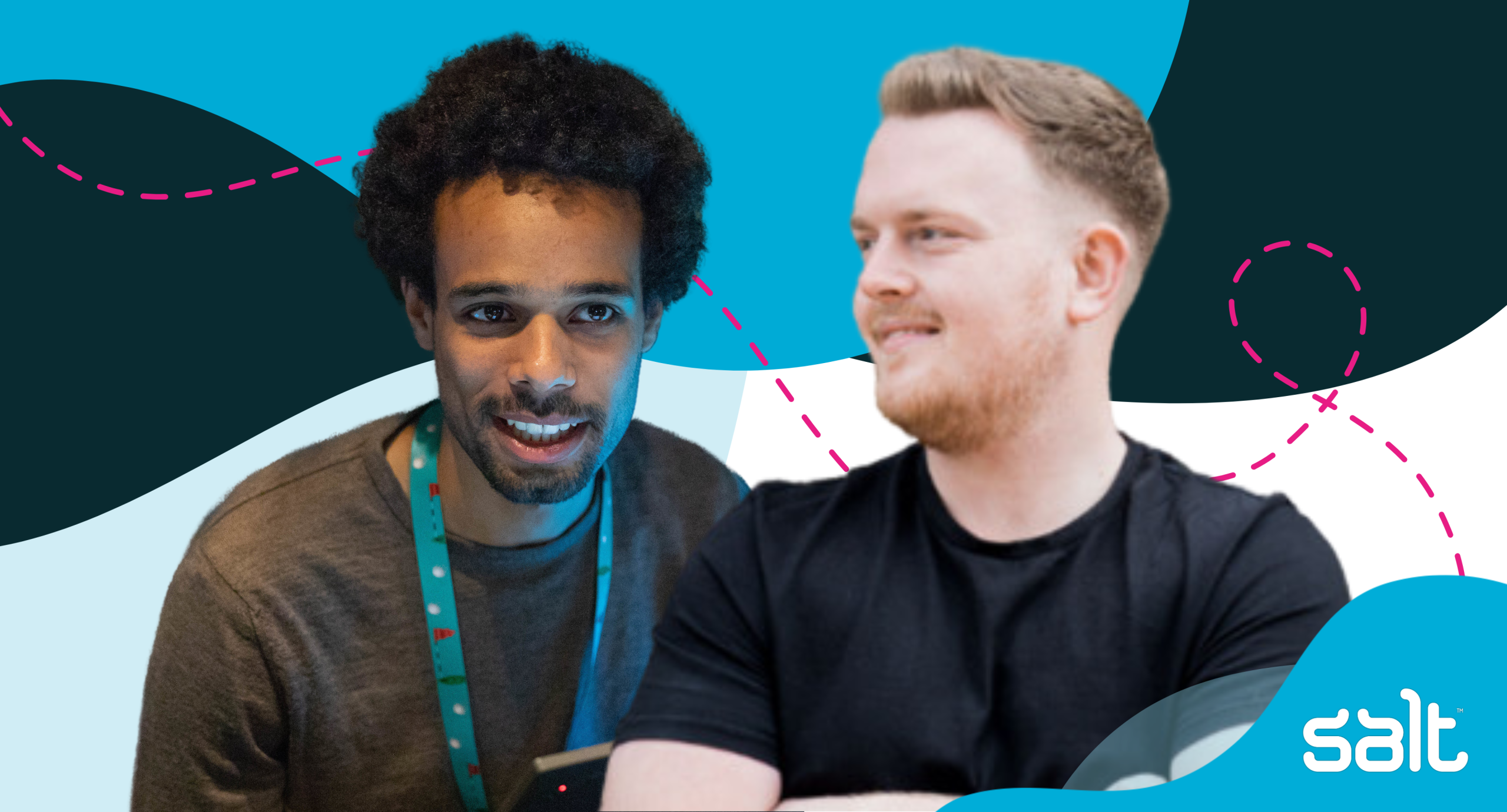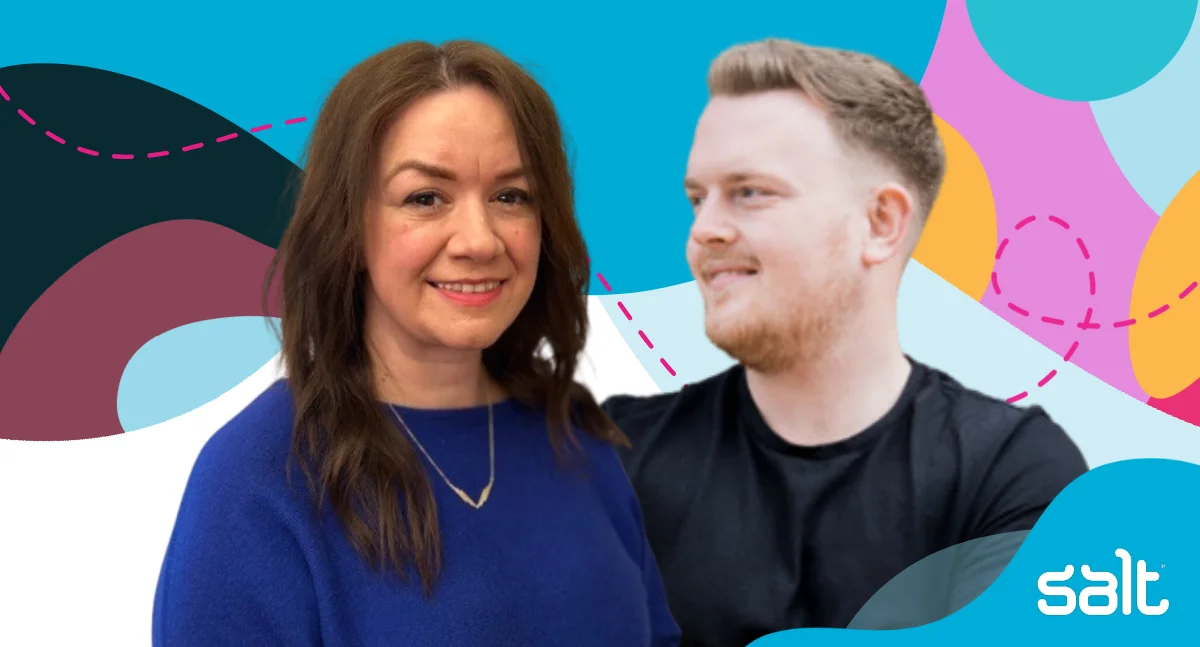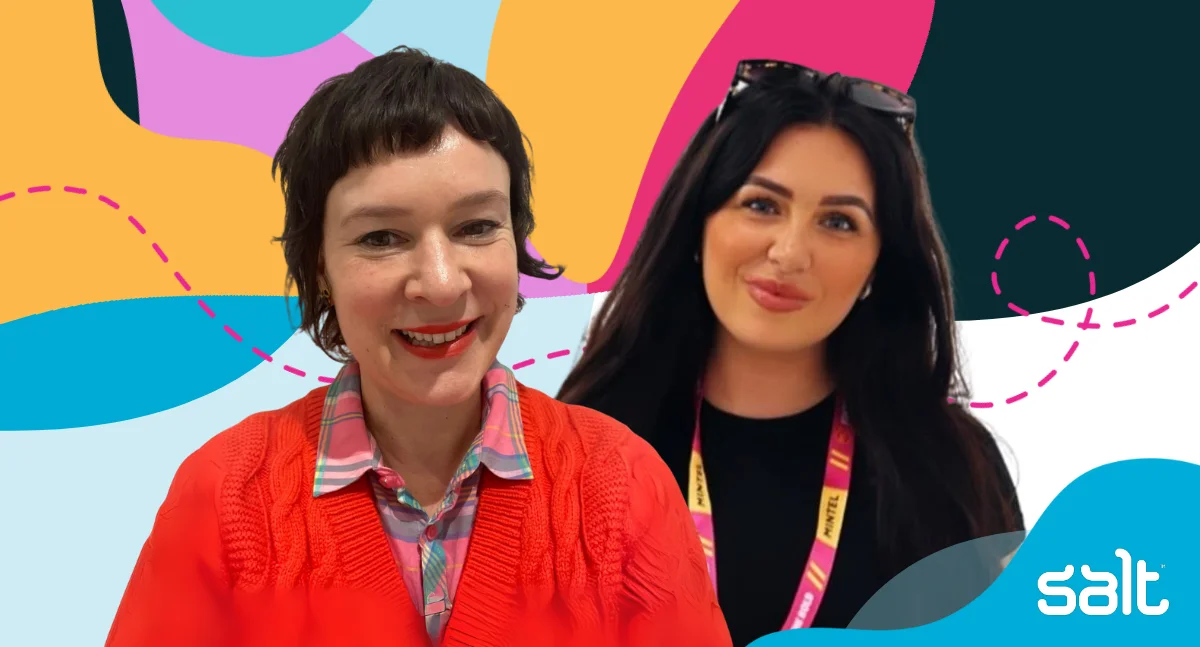
Alexander Fadahunsi, Senior Manager of CRM at Etsy, shares his journey across industries and continents, offering insights into building high-impact CRM strategies. Alexander explores the balance between personalisation and automation, the evolution of CRM technology, and what it takes to create meaningful customer relationships in today’s digital world.
In this Expert Insights series, Practice Manager Murrie Christie sits down with senior leaders in the CRM space to unpack #AllThingsCRM, from the latest industry trends and hiring insights to career advice and the future of customer relationship management. Expect bold conversations, practical advice, and a look behind the scenes of what’s shaping CRM today.
Looking for CRM experts for your next project? Salt can help.
Connect with Murrie on LinkedIn for more insight
Career & background: Alexander’s global journey in CRM
Can you tell us about your journey into CRM and how you got into the industry?
I started my career in CRM working for Thalys, the French-Belgian high-speed train operator, gaining technical skills that proved quite useful later down the line. Not too long after, I got the chance to work for a brand which had me as a loyal customer already, Nespresso. Being the brand advocate that I am, I got the amazing opportunity to be part of a global product launch. I’ve put in place a fully automated activation program and picked up the ins and outs of Swiss precision along the way.
I then made the jump to automotive and started as a Campaign Manager for Renault and Dacia. This role gave me a deep understanding of customer behaviour and how to nurture an existing base with the help of French Flair. My next move included relocating to the Mediterranean, working for the Nordic online game company, Betsson Group. This was a fantastic experience where I got to scale and localise a global CRM strategy for a multitude of brands and markets.
Years later, I moved to a British tech unicorn. At Trainline, we were scaling the UK success story to Europe. In the process, we went from start-up to becoming a listed company, which is truly mind-blowing to see up close.
Now I work for Etsy, and I was the first hire in the CRM team outside the US. I built a team to help scale the US program to other markets. I’ve learnt that at US companies, the sky is the limit. You will never hear IF something is possible, but rather HOW do we make it happen. This American entrepreneurship is a superpower I came to appreciate.
What have been some pivotal moments in your career that shaped your approach to CRM?
I would say moving to the UK to help bring Trainline to an IPO-ready phase. We had a white label CRM team and a Trainline CRM team. We merged those, and we also migrated from one CRM tool to the other. It was quite challenging from a technical as well as people management point of view, but it was a great time. I’m still in contact with my old team, which shows the strong relationships we’ve built over time.
What does your typical day look like in your role?
Change is the only constant, I would say. One day I could be focusing on building a strategy and tactical plans, the next I could be putting out fires. Overall, I tend to lean a lot on the team, so I put a lot of effort into building and nurturing autonomous teams that understand the strategy and long-term vision very well.
I create what I call a win-win-win situation. A win for the company, a win for my direct reports and a win for me. You are only as good as the people you work with.
Which skills or experiences outside of CRM have helped you the most in your career?
My background in economics certainly helps me spot trends and patterns. This is quite useful when analysing data and looking at customer behaviour. How I see it, CRM is a blend between psychology and science, so being able to rely on models has been quite helpful. However, it is also important to rely on intuition. This comes with experience.
Having lived in different countries and worked for different industries, I recognise that adaptability is key.
CRM strategy: Balancing personalisation and automation
What are some key metrics you track to measure CRM success?
It depends on the business, but generally, the financial metrics are the most important ones. Apart from that, I would say secondary metrics that signify customer intent are a good proxy. They will influence the financials but also steer you in the right direction for creating value for the customer.
When looking at channel metrics, I’d say clicks in general. This is a nice general metric that is uniform across emails, push, WhatsApp, in-app messages, etc. I like to standardise metrics where possible as it simplifies understanding and allows for a better comparison. That, in turn, will be beneficial for experimentation.
How do you balance personalisation and automation to create meaningful customer relationships?
It’s about finding the right balance between cleverness and creepiness. The fact that you know a lot doesn’t mean you should tell your customers this all the time. There is a place for inspirational communication as well. These can be less personalised but are a great place to experiment with en-masse and across different customer cohorts.
I think it’s better to test your way into an idea in a manual and scrappy way. To have Version two and Version three ready if the manual approach is successful.
The earlier you are in the lifecycle, the less you know about the customer, so the better it is to test a lot with different non-personalised content. Over time, I think personalisation should be the main driver of communication. However, it’s about establishing how much you need to know to make the switch.
Industry trends: How CRM is evolving
How have you seen CRM evolve over the past 5–10 years?
When I first started my career in CRM, the main channels were direct mail and email. There was a blanket approach to channels without a clear channel strategy. Over time, it became clear that each channel has its use cases. If the message is urgent, perhaps a push notification might be more useful. If the message is transactional and short, maybe SMS is the best channel. There is a lot of rich content and in-app messages with push notifications, or an email might be useful.
Related to this, I’ve also seen a shift from one static touch point to a multi-touchpoint CRM program. In essence, it is beneficial to have your whole program built for all channels, so it becomes easier to mix and match depending on what customers tell you they prefer.
I’ve seen the industry moving away from desktop only to mobile first. Back in the day, people would mainly open their CRM messages on a desktop. In developing markets, the customer base has totally skipped that habit as they went straight to the smartphone. Younger audiences are also more accustomed to mostly using their phones to open messages. Depending on your base a different approach to channel management is needed.
Last point. Closer integration in the business through the product teams. Historically, I’ve seen a distinct split between product marketers and CRM marketers. That is fading away now. With the move to more mobile app-first marketing, this makes a lot of sense. A closer collaboration between CRM and product teams leads to a brilliant user experience, which is great for the customer and different teams. It’s important to align on common metrics, though.
What are the biggest changes in customer behaviour you’ve observed, and how have you adapted?
There is a sea of sameness, especially in the digital space of subscription-based products as well as ecommerce. It becomes harder for the customer to understand the unique selling proposition. It is up to the marketing team to communicate these reasons and to build on brand recognition. Where previously brand teams would focus on above-the-line marketing campaigns, 360 campaigns are now a lot more common. These are campaigns that activate all channels at the same time.
The concept of share of wallet. Where in the past, generally options were limited, right now you can find pretty much anything you like online. This also means some unexpected consequences like cannibalisation of the share of wallet. If you have discretionary spend, are you going to splurge on a new gadget, go for a nice dinner or gift something meaningful to a special person? This became clear when inflation started to flare up. A competitor is not just a company that sells a similar product, but also the company that captures the mindshare and thus ultimately the share of wallet.
Technology & innovation: The future of CRM
What new technologies or platforms are exciting you in the CRM space right now?
The main buzzword, of course, is Artificial Intelligence. I think it can be used in multiple ways. One way is to create efficiencies in terms of coding HTML and building in personalisation. It’s fascinating what these LLMS can do, but the jury is still out on which one is the best overall. There is also something to be said about training agents. I think this could be a game-changer for CRM, you could train models to solve specific customer needs or business problems.
Another one is workflow efficiencies. A good example is how a marketing brief can be put together. Instead of using a brief template, what if you could train a LLM to work with you to output a brief that can cater for all stakeholders. It could also disperse that information across the channels each stakeholder uses. This would save up a lot of time which can be used for learning more about our customers or to think about new cutting-edge use cases.
Another one is generative AI. This can be very helpful to quickly spin up new content in a fast-paced environment. I see a future where one could train an agent to adhere to brand guidelines to come up with content that is on brand, keeps the compliance team happy and is more engaging for the customer.
How are AI, machine learning, or predictive analytics shaping the future of CRM?
In an e-commerce setting, I think recommendation sets will get a huge boost in accuracy. There is so much data to sift through. Before AI, you’d limit the training for the Machine Learning team, so they’d be able to optimise. Now we can take in all the data, including send and engagement, and overlay that with churn and propensity models. I think we are moving away from campaigns and starting to think more about touchpoints. Then, an algorithm could determine which tactics are needed for each touchpoint to execute on the strategy
Although some of the transformation (moving from campaigns to touchpoints) has been going on for years, just look at omni-channel campaign management. The AI boom will increase the number of tactics you can test and roll out. You can eventually move to a world where every user gets a different experience (so even get rid of personas).
What’s your view on the rise of Customer Data Platforms (CDPs) and their role in CRM?
I think CDPs might become obsolete. I saw their rise a couple of years ago, but they had limitations (not quite the flexibility and not as easy to use as filters in modern CRM tools). I think they are the middleman on the chopping block. If AI can help with data selection, transformation and formatting, I think you can easily cut out this layer. I do have to say this is assuming you have full support from the data teams. If not, it might still be useful. But CRM tools are also rapidly evolving (going from on-device to cloud) and are expanding their feature sets. So, there might be a consolidation happening over time.
Leadership & future outlook: Alexander’s vision for CRM
Where do you see the CRM landscape headed over the next 3–5 years?
Vertical integration of tools. Where most modern tools are open and able to connect through external sources, I think the big players might consolidate and make it easier to work within their ecosystems.
There will be a bigger overlap between marketing analytics and technical profiles within the team. As automation and personalisation take the centre stage, I think a skillset that will become more valuable is to be able to think analytically and to use some of the scientific approaches to marketing.
Also, more in-house teams and less reliance on agencies. With budgets tightening and privacy concerns in the advent of Artificial Intelligence, I think it will be tough for marketing agencies to continue to bring value on the execution side.
On the other hand, I think agencies that have developed their own models to cater for business needs will continue to do well. There are also different use cases for different sizes of businesses and industries.
Rome wasn’t built in a day. Sometimes you just need a solid pair of hands to execute or a good external thought partner, which is where I see great value in using agencies.
What do you love about the industry and the people you work with?
I love that there’s no such thing as a “CRM graduate.” Most people end up in CRM through different paths. We can all learn from each other, and that diverse pool of talent creates some of the most innovative approaches to retaining customers.
I also believe that CRM can be a recession-proof career as it is considered a non-paid channel, and keeping customers for now is always cheaper than getting new customers.
What do you look for when interviewing or reviewing CVs?
People laugh at me for what I am going to say, but a sparkle in their eyes. I want to see genuine excitement about the mission and the role. It also helps to have relevant experience (in the widest sense).
Clear communication skills is also a key skill I look for. This will become even more important when interacting with LLMs. A great candidate should be able to communicate well with humans as well as digital interfaces.
Being able to demonstrate actual individual impact. What was the overall vision/strategy, and how did you contribute to this? What value can you bring to the team from day one? When going through CVs it can be difficult to narrow down the list. I look for company experience (are the companies operating in the same way as the company I work for), flexibility (how does the person progress over time, swinging from pure marketing to more technical roles and back) and interesting backgrounds.
This does not mean everybody needs to have a fancy degree, but a background that fills a gap in the team is helpful. I keep referring to teams as Power Rangers. Each has their speciality, but the power is in the combination of all of them together (they can transform into one massive end-all be-all Megazord).
“Thank you so much to Alexander for sitting down with me and going through all of this. I have recruited in the CRM world for close to 10 years and I love nothing more than having these types of conversations with people, where not only you (the reader) takes something from it, but ensures that I learn about the market that I recruit in and can share genuine advice to both candidates and clients alike.
I hope you enjoy the first interview!” – Murrie Christie, Practice Manager & Host of All Things CRM
Hiring? Salt connects you to outstanding top talent worldwide
If you’re interested in hearing about how Salt’s top talent recruitment experts around the world can help with your hiring right now, get in touch. Click below to contact the closest Salt team to you!
- Australia
- Canada
- Belgium
- Europe
- Hong Kong
- Malaysia
- Middle East and North Africa
- Netherlands
- New Zealand
- Singapore
- South Africa
- United Kingdom
- United States
Keep up with Salt’s top talent job market insights and hiring advice! You can keep in the loop by following us on. LinkedIn, YouTube, Facebook, Instagram, and Spotify.


